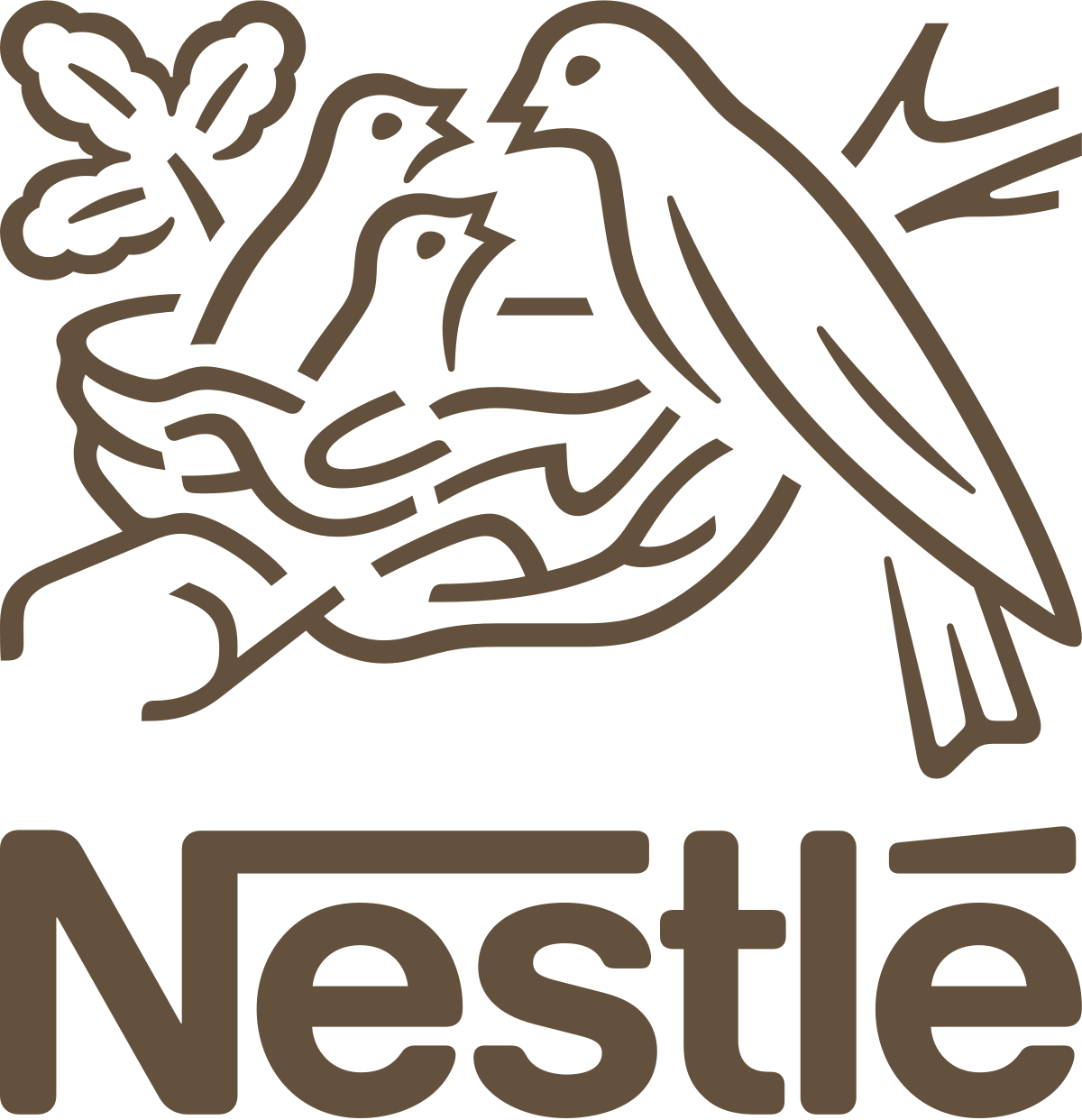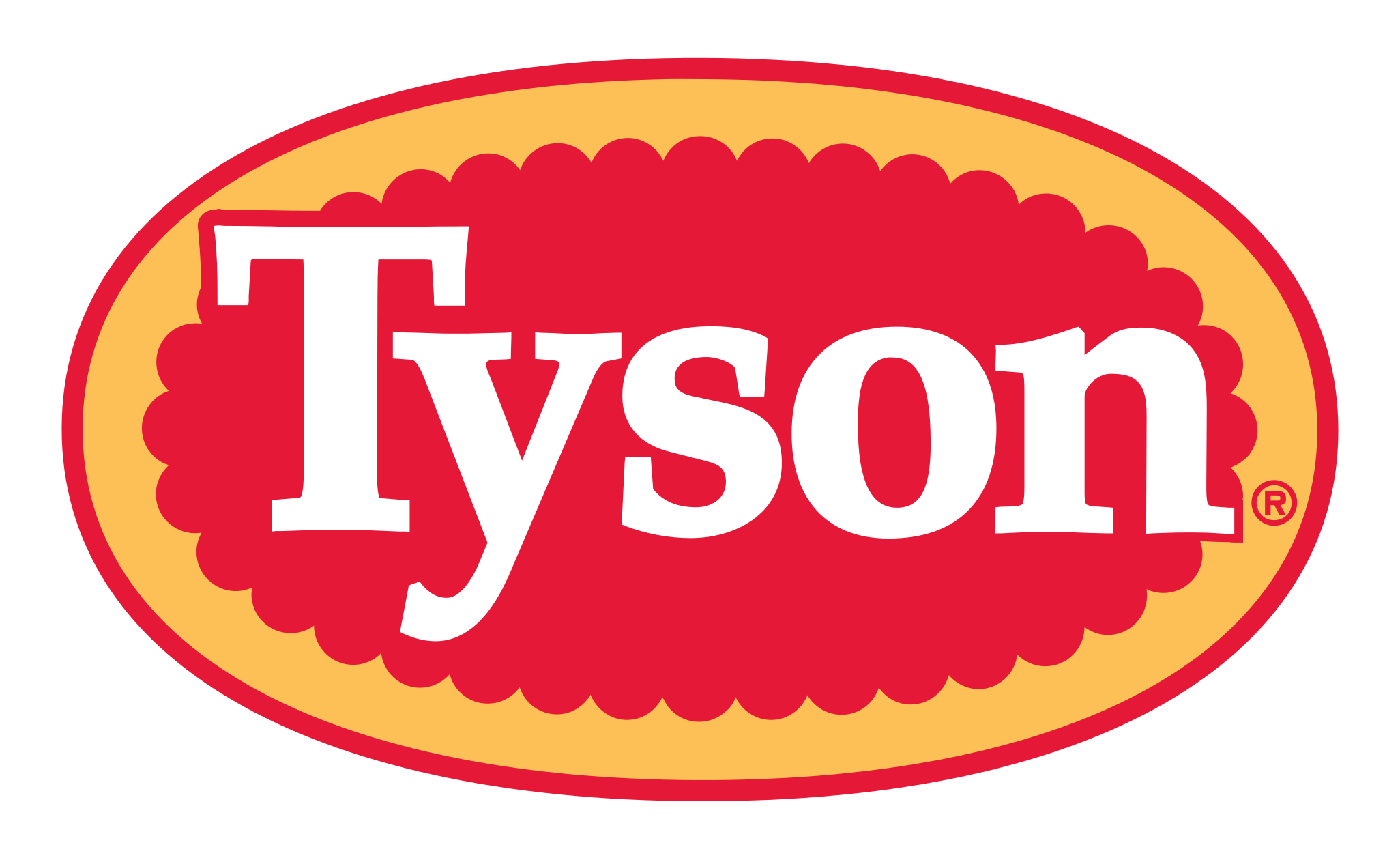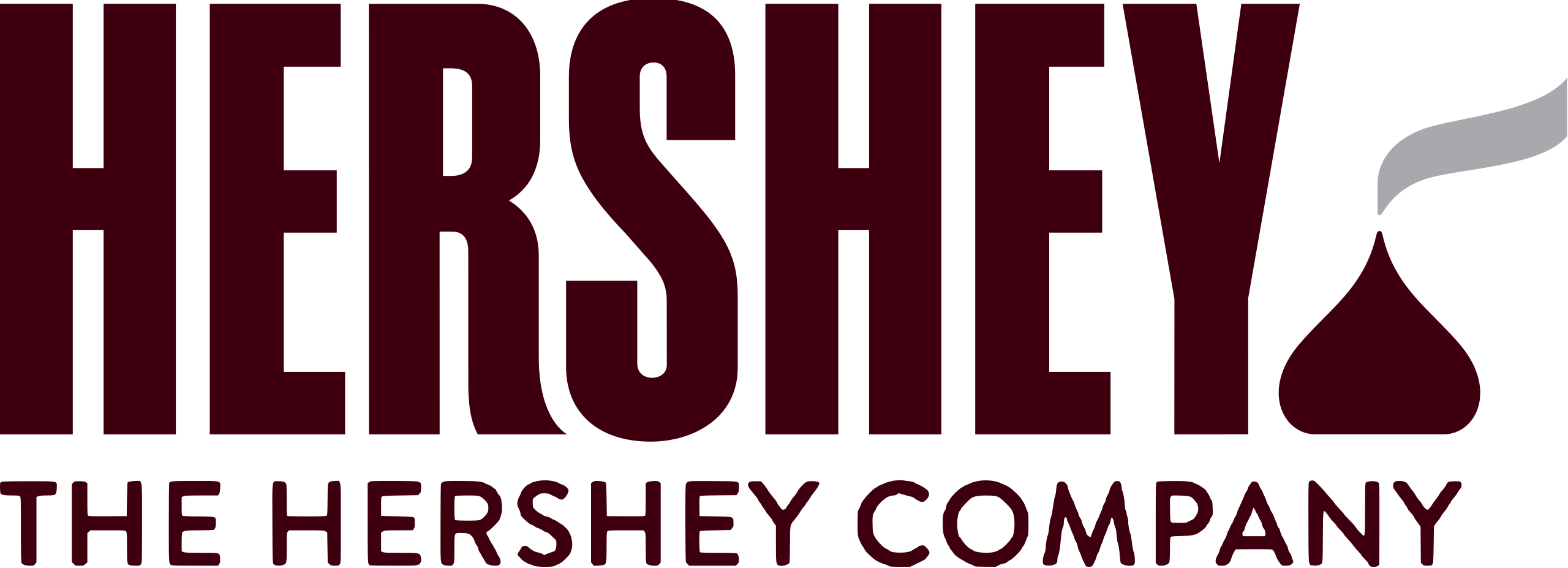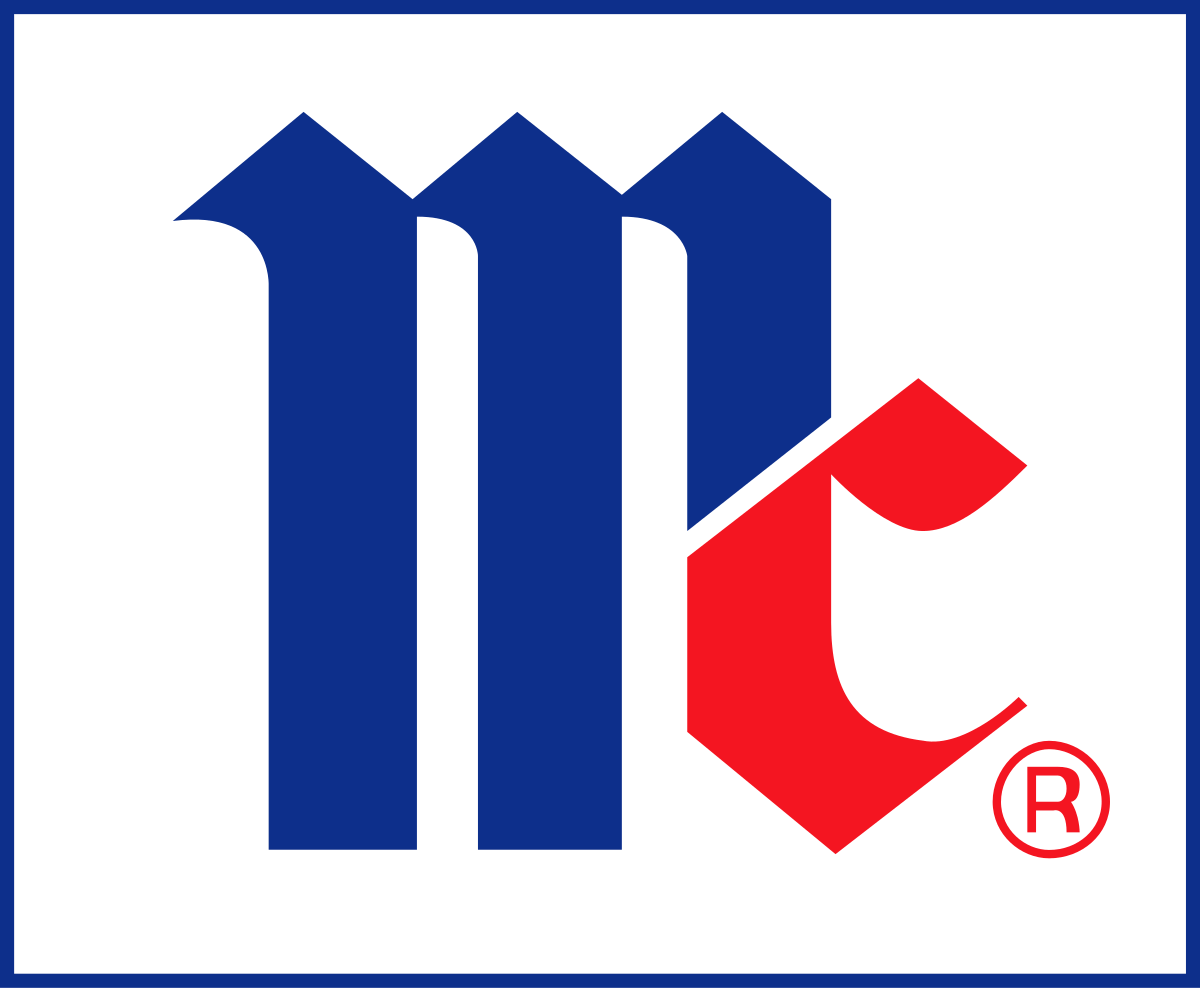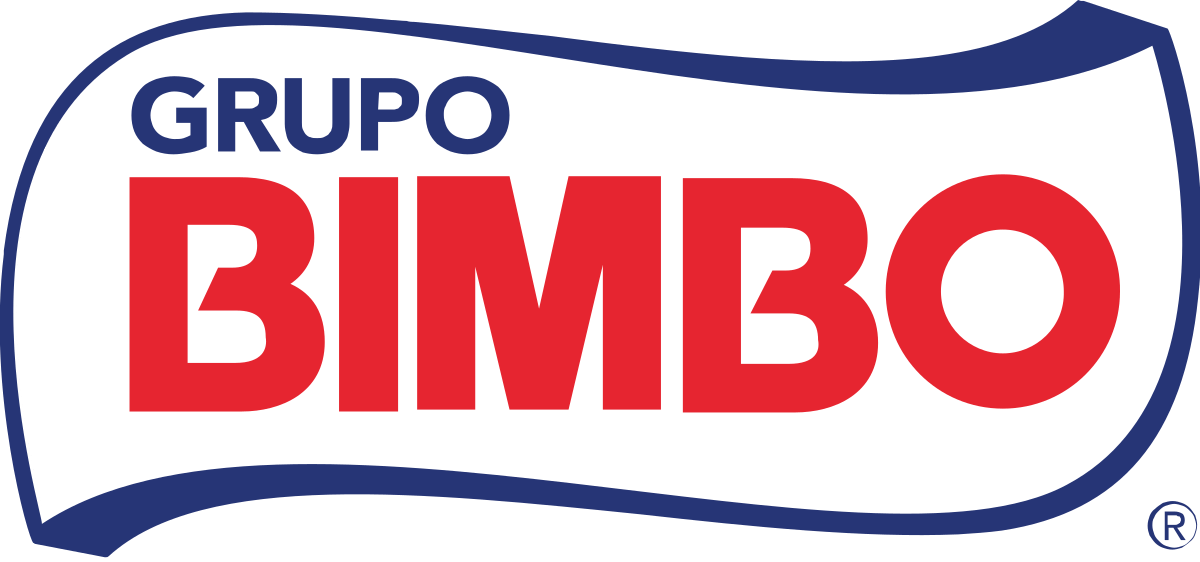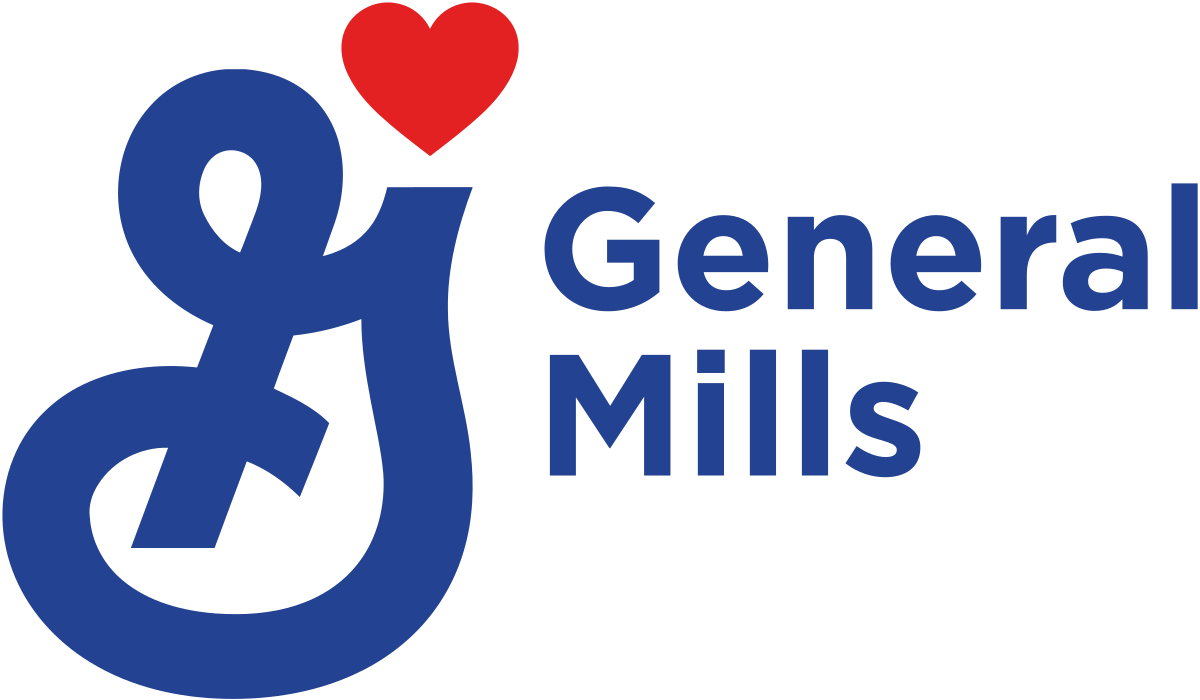Global Clinical Nutrition Market: By Product, By Sales Channel, By Application, By Region & Segmental Insights Trends and Forecast, 2023 – 2034
- Industry: Food & Beverages
- Report ID: TNR-110-1157
- Number of Pages: 420
- Table/Charts : Yes
- June, 2024
- Base Year : 2024
- No. of Companies : 10+
- No. of Countries : 29
- Views : 10115
- Covid Impact Covered: Yes
- War Impact Covered: Yes
- Formats : PDF, Excel, PPT
Clinical nutrition is a specialized field focused on the role of nutrition in the prevention, diagnosis, and management of diseases. It involves the assessment of an individual’s nutritional needs and the development of tailored dietary plans to address specific health conditions. Clinical nutrition encompasses a broad range of practices, including the use of oral supplements, enteral nutrition (tube feeding), and parenteral nutrition (intravenous feeding) to ensure patients receive essential nutrients when they cannot consume a regular diet.
This approach is critical in managing chronic diseases such as diabetes, cardiovascular disease, and gastrointestinal disorders, as well as in acute care settings for patients recovering from surgery or severe illness. By optimizing nutritional intake, clinical nutrition aims to improve patient outcomes, enhance immune function, and support overall health and well-being, making it an integral component of comprehensive healthcare.
The demand for clinical nutrition is driven by the increasing prevalence of chronic diseases and an aging population, both of which require specialized nutritional support for effective management. Chronic conditions such as diabetes, cancer, and cardiovascular diseases necessitate tailored nutritional plans to improve patient outcomes and quality of life. The aging global population faces higher risks of malnutrition and associated complications, further boosting the need for clinical nutrition. Additionally, heightened awareness of the importance of nutrition in disease prevention and recovery drives demand among healthcare providers and patients.
Technological advancements have also improved the formulation and delivery of clinical nutrition products, making them more effective and accessible. Government initiatives and regulations promoting better nutritional standards in healthcare settings contribute to this growing demand, ensuring that patients receive comprehensive care tailored to their nutritional needs.
In terms of revenue, the global clinical nutrition market was worth US$ 31.9 Bn in 2023, anticipated to witness CAGR of 6.2% during 2024 – 2034.

Global Clinical Nutrition Market Dynamics
Aging Population: The increasing number of elderly individuals worldwide drives demand for clinical nutrition, as older adults often face nutritional deficiencies and chronic illnesses that require specialized dietary management. Innovations in nutrition science and product formulations have led to the development of more effective and palatable clinical nutrition products, enhancing patient adherence and therapeutic efficacy.
Rise in Chronic Diseases: The global surge in chronic conditions such as diabetes, cancer, and cardiovascular diseases necessitates clinical nutrition to support patient recovery, manage symptoms, and improve overall health outcomes. High rates of malnutrition in developing countries drive demand for clinical nutrition products and interventions, as these regions seek to address severe nutritional deficiencies and related health issues.
Increased Health Awareness: Growing awareness of the importance of nutrition in preventive healthcare and disease management encourages the adoption of clinical nutrition solutions among consumers and healthcare providers. Supportive policies and regulations aimed at improving healthcare standards and nutritional support, especially in hospitals and care facilities, bolster the clinical nutrition market.
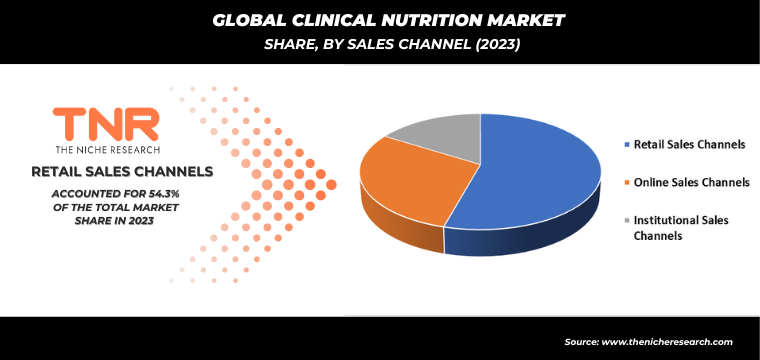
Oral Clinical Nutrition Segment has Garnered Major Market Share in the Global Clinical Nutrition Market During the Forecast Period (2024 – 2034).
The demand for oral clinical nutrition within the broader scope of clinical nutrition is driven by its crucial role in managing various health conditions and enhancing patient recovery. Oral clinical nutrition products, including specialized dietary supplements and nutrient-dense drinks, provide essential nutrients that patients might not obtain through regular diets due to illness, surgery, or chronic conditions. This form of nutrition is particularly vital for patients with difficulty swallowing, poor appetite, or specific nutrient deficiencies.
The aging population, with its associated increase in chronic diseases such as diabetes, cancer, and cardiovascular issues, significantly fuels the demand for these products. Additionally, the growing emphasis on preventive healthcare and the management of malnutrition in both hospital and home settings underscores the importance of accessible and effective nutritional solutions. Advances in formulation technology have also made these products more palatable and effective, further driving their adoption and integration into patient care regimens.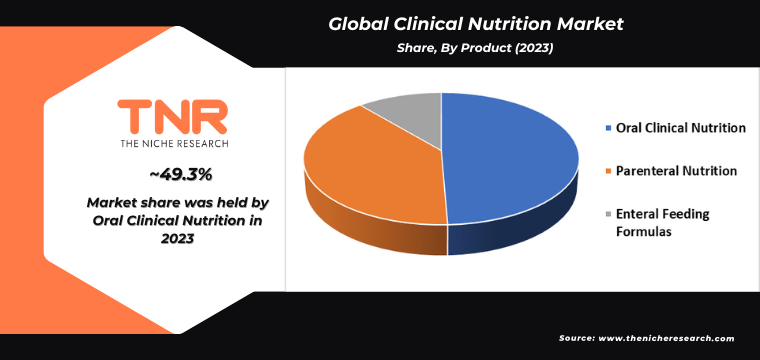
By Application Cancer Care Segment had the Highest Share in the Global Clinical Nutrition Market in 2023.
Clinical nutrition in cancer care is increasingly recognized as a critical component in improving treatment outcomes and enhancing quality of life for patients. One of the primary drivers for the demand in this field is the significant impact nutrition has on the immune system, which plays a crucial role in cancer treatment effectiveness and recovery. Adequate nutritional support helps mitigate treatment-related side effects such as weight loss, malnutrition, and fatigue, which are common in cancer patients undergoing chemotherapy, radiation, or surgery. Tailored nutrition plans, including supplements and dietary adjustments, are designed to maintain or improve nutritional status and support overall well-being during treatment.
Moreover, nutritional interventions are essential in managing symptoms like nausea, taste changes, and digestive issues, thereby enhancing patients’ ability to tolerate and adhere to their cancer therapies. As cancer treatment becomes more personalized, integrating clinical nutrition into oncology care protocols becomes increasingly important in optimizing patient outcomes and supporting long-term survivorship.
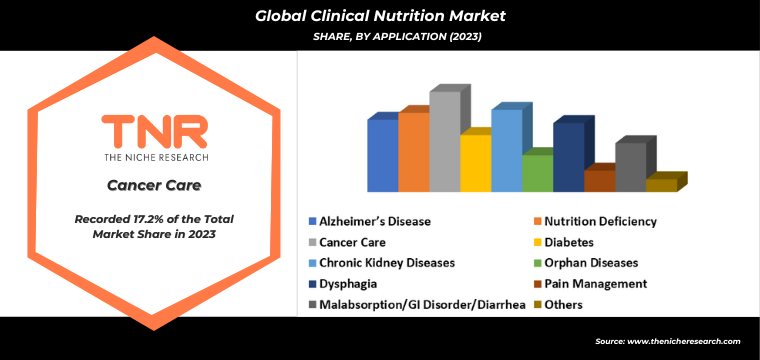
By Region, Europe Dominated the Global Clinical Nutrition Market in 2023.
In Europe, the demand for clinical nutrition is driven by several key factors that underscore its importance in healthcare. A significant driver is the aging population across many European countries, leading to an increased prevalence of chronic diseases and conditions that necessitate specialized nutritional support. Clinical nutrition plays a crucial role in managing these conditions, including malnutrition, diabetes, cardiovascular diseases, and gastrointestinal disorders, by providing tailored dietary plans and nutritional supplements. Moreover, the rising incidence of obesity and related metabolic disorders has heightened awareness of the role of nutrition in preventive healthcare and disease management.
As healthcare systems prioritize cost-effective approaches and personalized medicine, clinical nutrition emerges as a vital component in improving patient outcomes and reducing healthcare expenditures associated with prolonged hospital stays and complications. Additionally, advancements in nutritional research and technology contribute to the development of innovative nutritional therapies, further driving the demand for clinical nutrition solutions in Europe.
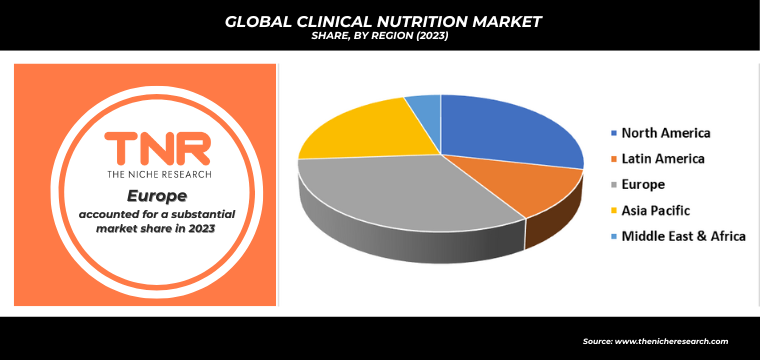
Competitive Landscape: Global Clinical Nutrition Market:
- Abbott Nutrition
- Abbvie (Allergan)
- Baxter
- Baxter International Inc.
- Bayer AG
- Danone (Nutricia)
- Fresenius Kabi
- Grifols, S.A.
- Mead Johnson & Company, LLC
- Meiji Holdings. Co., Ltd.
- Nestle
- Otsuka Holdings Co., Ltd.
- Pfizer Inc.
- Victus, Inc.
- Other Industry Participants
Global Clinical Nutrition Market Scope
| Report Specifications | Details |
| Market Revenue in 2023 | US$ 31.9 Bn |
| Market Size Forecast by 2034 | US$ 61.8 Bn |
| Growth Rate (CAGR) | 6.2% |
| Historic Data | 2016 – 2022 |
| Base Year for Estimation | 2023 |
| Forecast Period | 2024 – 2034 |
| Report Inclusions | Market Size & Estimates, Market Dynamics, Competitive Scenario, Trends, Growth Factors, Market Determinants, Key Investment Segmentation, Product/Service/Solutions Benchmarking |
| Segments Covered | By Product, By Sales Channel, By Application, By Region |
| Regions Covered | North America, Europe, Asia Pacific, Middle East & Africa, Latin America |
| Countries Covered | U.S., Canada, Mexico, Rest of North America, France, The UK, Spain, Germany, Italy, Nordic Countries (Denmark, Finland, Iceland, Sweden, Norway), Benelux Union (Belgium, The Netherlands, Luxembourg), Rest of Europe, China, Japan, India, New Zealand, Australia, South Korea, Southeast Asia (Indonesia, Thailand, Malaysia, Singapore, Rest of Southeast Asia), Rest of Asia Pacific, Saudi Arabia, UAE, Egypt, Kuwait, South Africa, Rest of Middle East & Africa, Brazil, Argentina, Rest of Latin America |
| Key Players | Abbott Nutrition, Abbvie (Allergan), Baxter, Baxter International Inc., Bayer AG, Danone (Nutricia), Fresenius Kabi, Grifols, S.A., Mead Johnson & Company, LLC, Meiji Holdings. Co., Ltd., Nestle, Otsuka Holdings Co., Ltd., Pfizer Inc., Victus, Inc., Other Industry Participants |
| Customization Scope | Customization allows for the inclusion/modification of content pertaining to geographical regions, countries, and specific market segments. |
| Pricing & Procurement Options | Explore purchase options tailored to your specific research requirements |
| Contact Details | Consult With Our Expert
Japan (Toll-Free): +81 663-386-8111 South Korea (Toll-Free): +82-808- 703-126 Saudi Arabia (Toll-Free): +966 800-850-1643 United Kingdom: +44 753-710-5080 United States: +1 302-232-5106 E-mail: askanexpert@thenicheresearch.com
|
Global Clinical Nutrition Market
By Product
- Oral Clinical Nutrition
- Parenteral Nutrition
- Carbohydrates
- Parenteral Lipid Emulsion
- Single Dose Amino Acid Solutions
- Trace Elements
- Vitamins & Minerals
- Enteral Feeding Formulas
- Standard Formula
- Disease-specific Formulas
By Sales Channel
- Retail Sales Channels
- Online Sales Channels
- Institutional Sales Channels
By Application
- Alzheimer’s Disease
- Nutrition Deficiency
- Cancer Care
- Diabetes
- Chronic Kidney Diseases
- Orphan Diseases
- Dysphagia
- Pain Management
- Malabsorption/GI Disorder/Diarrhea
- Others
By Region
- North America (U.S., Canada, Mexico, Rest of North America)
- Europe (France, The UK, Spain, Germany, Italy, Nordic Countries (Denmark, Finland, Iceland, Sweden, Norway), Benelux Union (Belgium, The Netherlands, Luxembourg), Rest of Europe)
- Asia Pacific (China, Japan, India, New Zealand, Australia, South Korea, Southeast Asia (Indonesia, Thailand, Malaysia, Singapore, Rest of Southeast Asia), Rest of Asia Pacific)
- Middle East & Africa (Saudi Arabia, UAE, Egypt, Kuwait, South Africa, Rest of Middle East & Africa)
- Latin America (Brazil, Argentina, Rest of Latin America)
Report Layout:
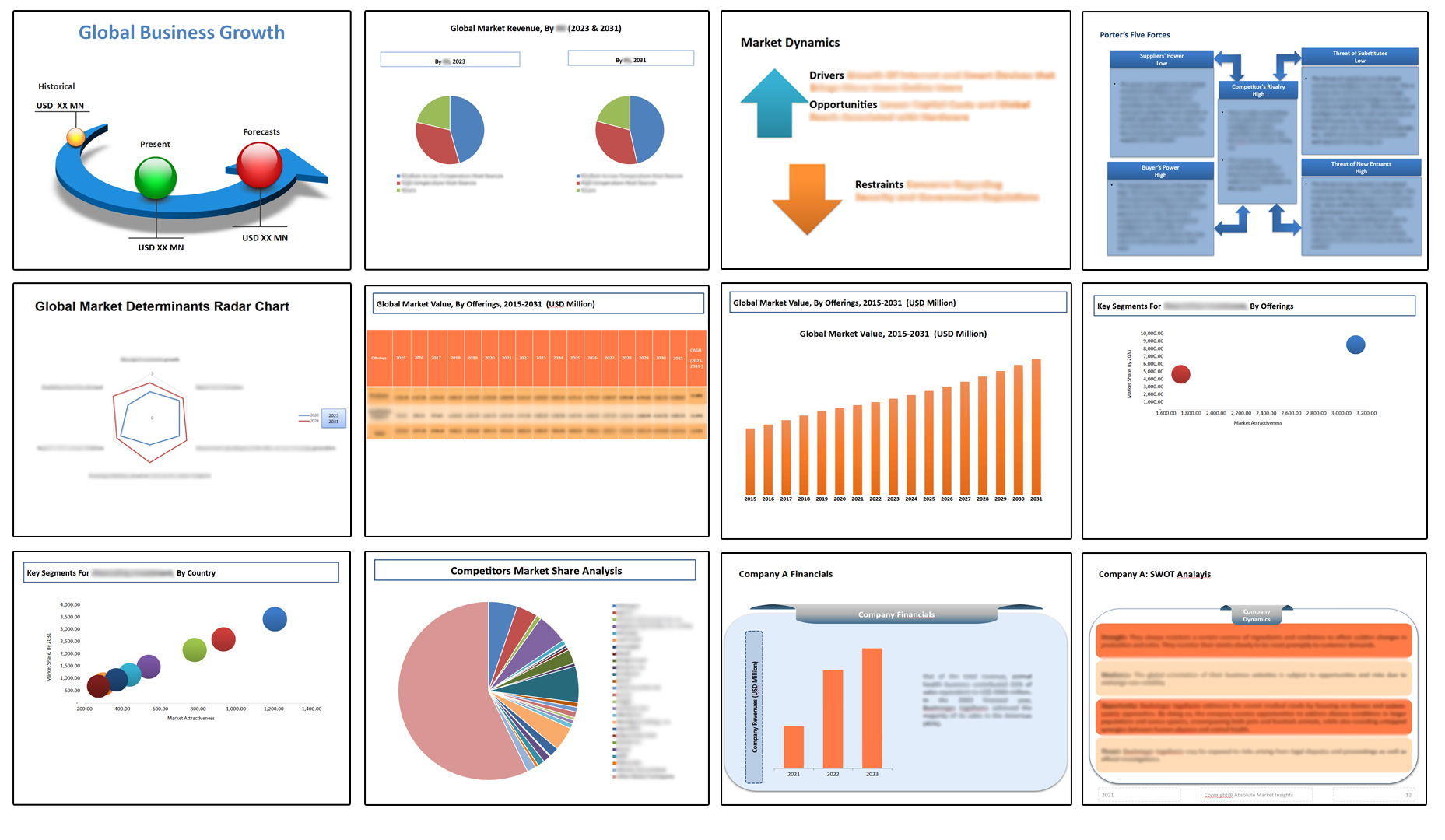
Table of Contents
Note: This ToC is tentative and can be changed according to the research study conducted during the course of report completion.
**Exclusive for Multi-User and Enterprise User.
Global Clinical Nutrition Market
By Product
- Oral Clinical Nutrition
- Parenteral Nutrition
- Carbohydrates
- Parenteral Lipid Emulsion
- Single Dose Amino Acid Solutions
- Trace Elements
- Vitamins & Minerals
- Enteral Feeding Formulas
- Standard Formula
- Disease-specific Formulas
By Sales Channel
- Retail Sales Channels
- Online Sales Channels
- Institutional Sales Channels
By Application
- Alzheimer’s Disease
- Nutrition Deficiency
- Cancer Care
- Diabetes
- Chronic Kidney Diseases
- Orphan Diseases
- Dysphagia
- Pain Management
- Malabsorption/GI Disorder/Diarrhea
- Others
By Region
- North America (U.S., Canada, Mexico, Rest of North America)
- Europe (France, The UK, Spain, Germany, Italy, Nordic Countries (Denmark, Finland, Iceland, Sweden, Norway), Benelux Union (Belgium, The Netherlands, Luxembourg), Rest of Europe)
- Asia Pacific (China, Japan, India, New Zealand, Australia, South Korea, Southeast Asia (Indonesia, Thailand, Malaysia, Singapore, Rest of Southeast Asia), Rest of Asia Pacific)
- Middle East & Africa (Saudi Arabia, UAE, Egypt, Kuwait, South Africa, Rest of Middle East & Africa)
- Latin America (Brazil, Argentina, Rest of Latin America)
The Niche Research approach encompasses both primary and secondary research methods to provide comprehensive insights. While primary research is the cornerstone of our studies, we also incorporate secondary research sources such as company annual reports, premium industry databases, press releases, industry journals, and white papers.
Within our primary research, we actively engage with various industry stakeholders, conducting paid interviews and surveys. Our meticulous analysis extends to every market participant in major countries, allowing us to thoroughly examine their portfolios, calculate market shares, and segment revenues.
Our data collection primarily focuses on individual countries within our research scope, enabling us to estimate regional market sizes. Typically, we employ a bottom-up approach, meticulously tracking trends in different countries. We analyze growth drivers, constraints, technological innovations, and opportunities for each country, ultimately arriving at regional figures.Our process begins by examining the growth prospects of each country. Building upon these insights, we project growth and trends for the entire region. Finally, we utilize our proprietary model to refine estimations and forecasts.
Our data validation standards are integral to ensuring the reliability and accuracy of our research findings. Here’s a breakdown of our data validation processes and the stakeholders we engage with during our primary research:
- Supply Side Analysis: We initiate a supply side analysis by directly contacting market participants, through telephonic interviews and questionnaires containing both open-ended and close-ended questions. We gather information on their portfolios, segment revenues, developments, and growth strategies.
- Demand Side Analysis: To gain insights into adoption trends and consumer preferences, we reach out to target customers and users (non-vendors). This information forms a vital part of the qualitative analysis section of our reports, covering market dynamics, adoption trends, consumer behavior, spending patterns, and other related aspects.
- Consultant Insights: We tap into the expertise of our partner consultants from around the world to obtain their unique viewpoints and perspectives. Their insights contribute to a well-rounded understanding of the markets under investigation.
- In-House Validation: To ensure data accuracy and reliability, we conduct cross-validation of data points and information through our in-house team of consultants and utilize advanced data modeling tools for thorough verification.
The forecasts we provide are based on a comprehensive assessment of various factors, including:
- Market Trends and Past Performance (Last Five Years): We accurately analyze market trends and performance data from preceding five years to identify historical patterns and understand the market’s evolution.
- Historical Performance and Growth of Market Participants: We assess the historical performance and growth trajectories of key market participants. This analysis provides insights into the competitive landscape and individual company strategies.
- Market Determinants Impact Analysis (Next Eight Years): We conduct a rigorous analysis of the factors that are projected to influence the market over the next eight years. This includes assessing both internal and external determinants that can shape market dynamics.
- Drivers and Challenges for the Forecast Period:Identify the factors expected to drive market growth during the forecast period, as well as the challenges that the industry may face. This analysis aids in deriving an accurate growth rate projection.
- New Acquisitions, Collaborations, or Partnerships: We keep a close watch on any new acquisitions, collaborations, or partnerships within the industry. These developments can have a significant impact on market dynamics and competitiveness.
- Macro and Micro Factors Analysis:A thorough examination of both macro-level factors (e.g., economic trends, regulatory changes) and micro-level factors (e.g., technological advancements, consumer preferences) that may influence the market during the forecast period.
- End-User Sentiment Analysis: To understand the market from the end-user perspective, we conduct sentiment analysis. This involves assessing the sentiment, preferences, and feedback of the end-users, which can provide valuable insights into market trends.
- Perspective of Primary Participants: Insights gathered directly from primary research participants play a crucial role in shaping our forecasts. Their perspectives and experiences provide valuable qualitative data.
- Year-on-Year Growth Trend: We utilize a year-on-year growth trend based on historical market growth and expected future trends. This helps in formulating our growth projections, aligning them with the market’s historical performance.
Research process adopted by TNR involves multiple stages, including data collection, validation, quality checks, and presentation. It’s crucial that the data and information we provide add value to your existing market understanding and expertise. We have also established partnerships with business consulting, research, and survey organizations across regions and globally to collaborate on regional analysis and data validation, ensuring the highest level of accuracy and reliability in our reports.
